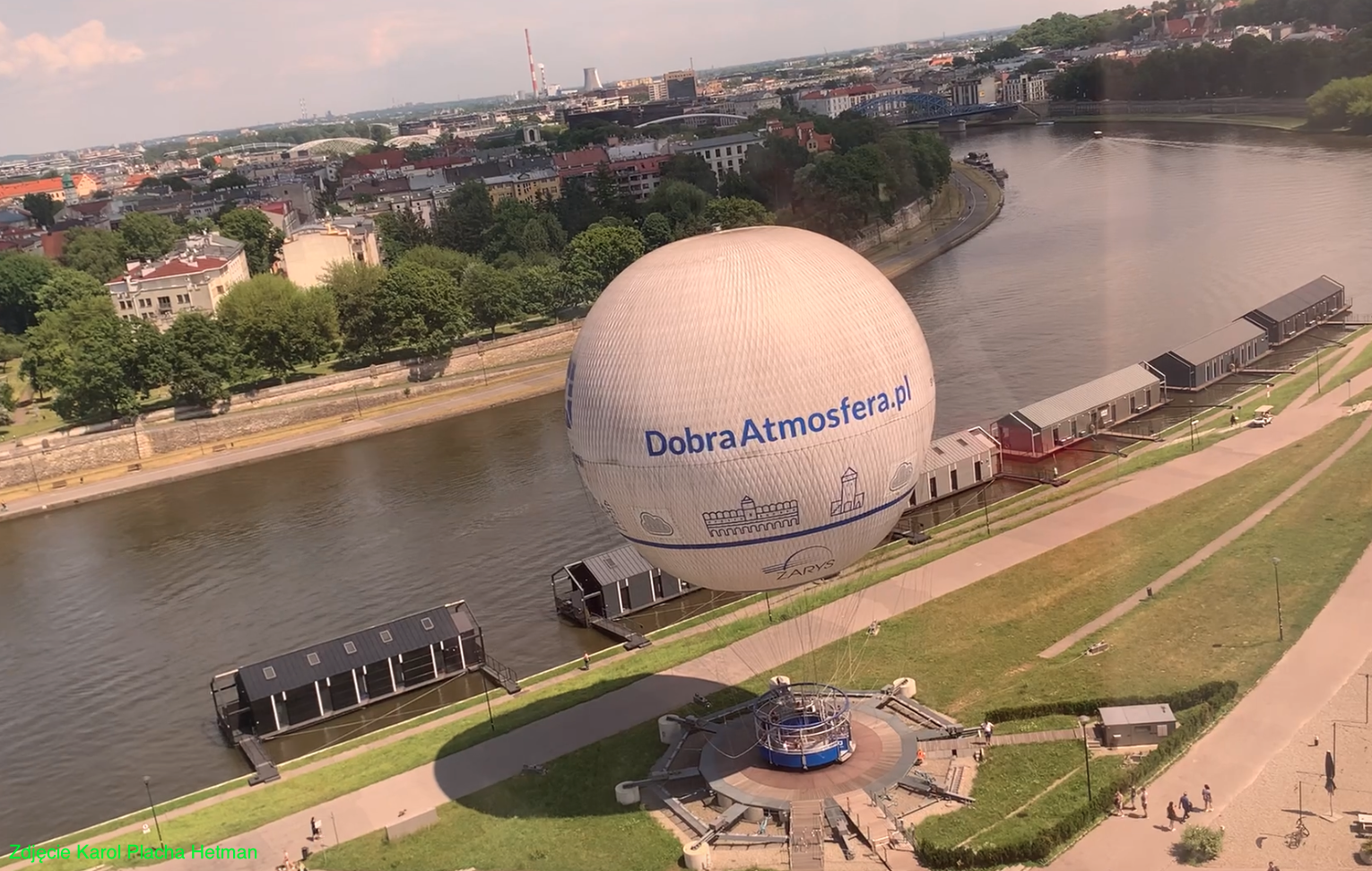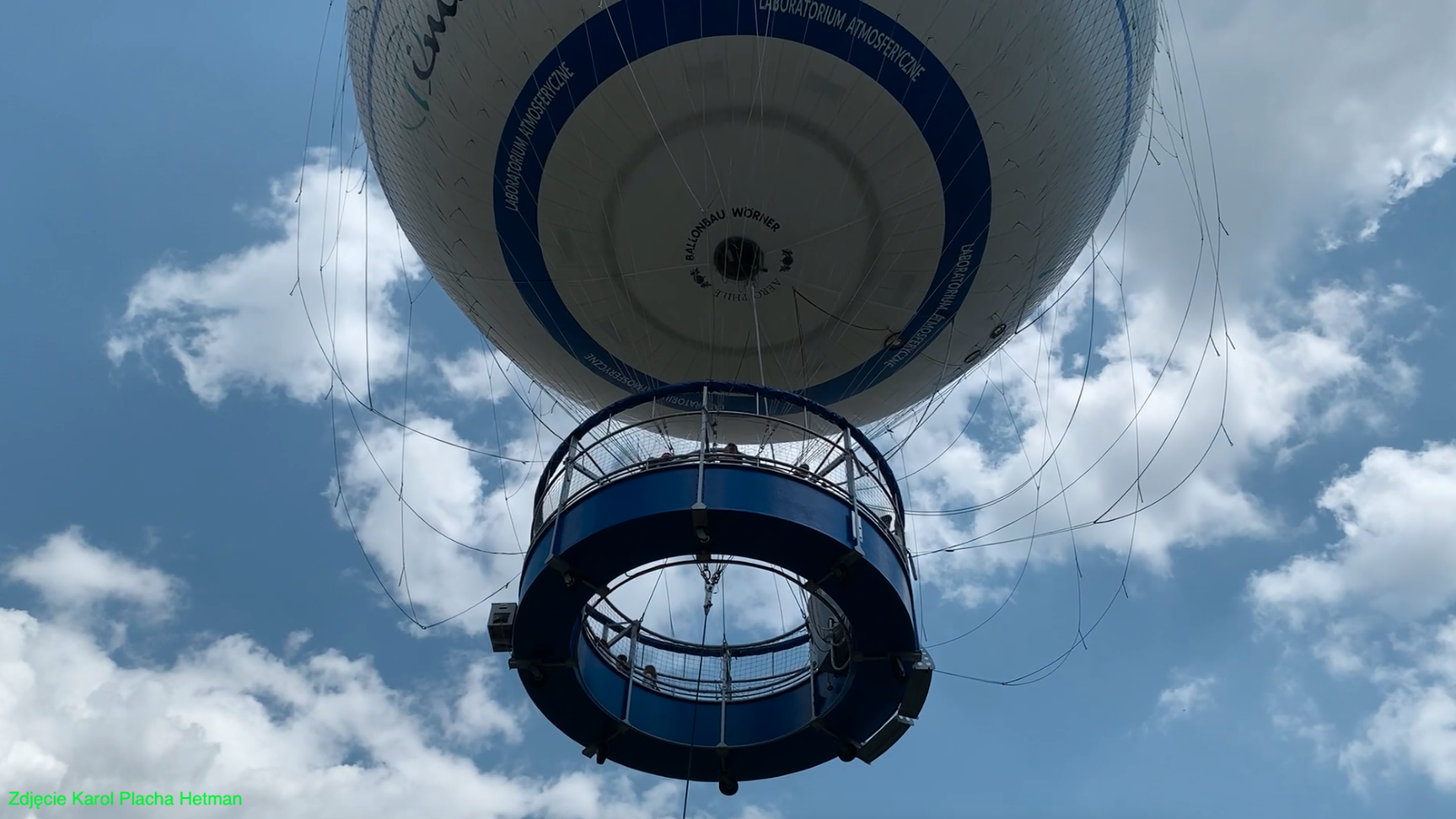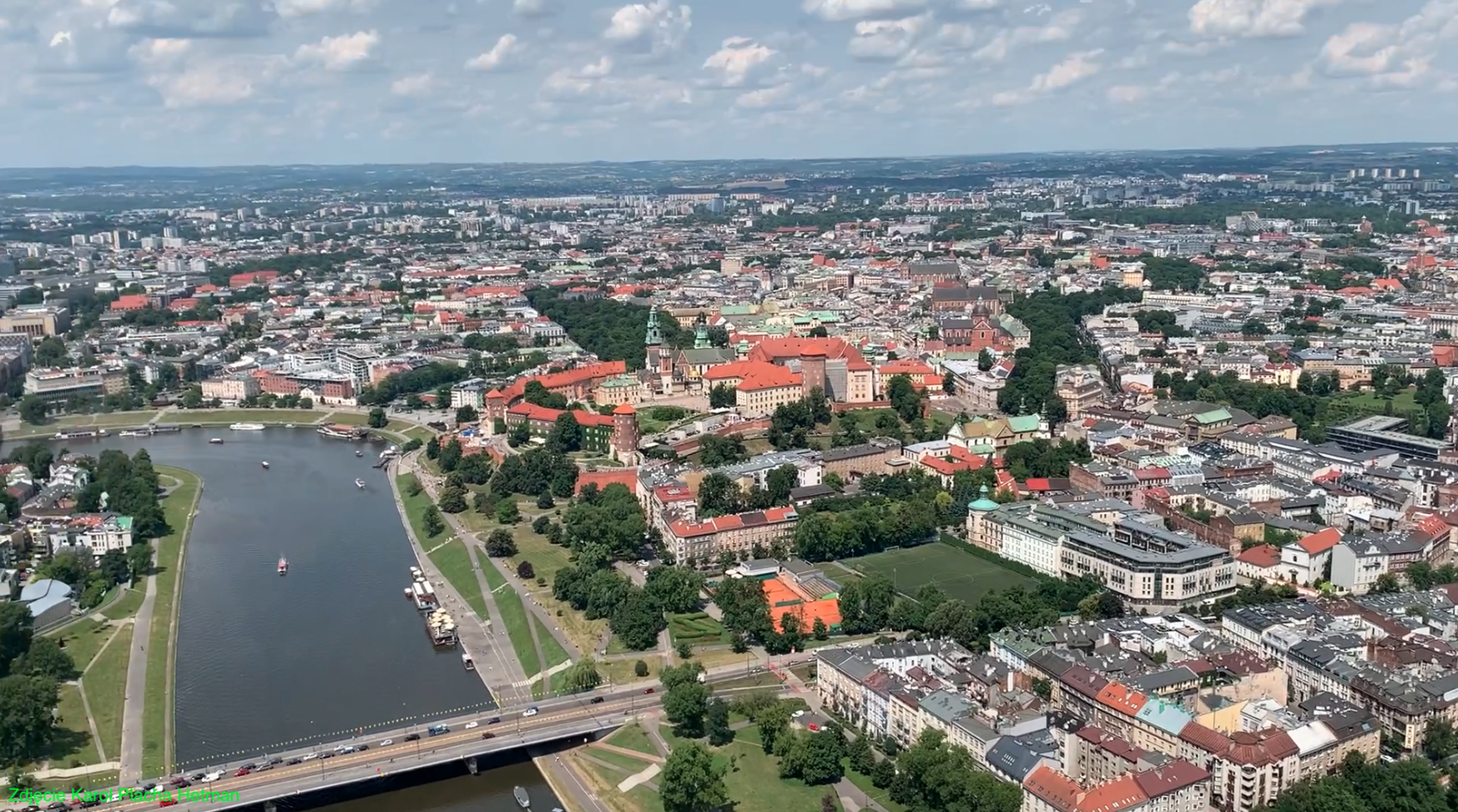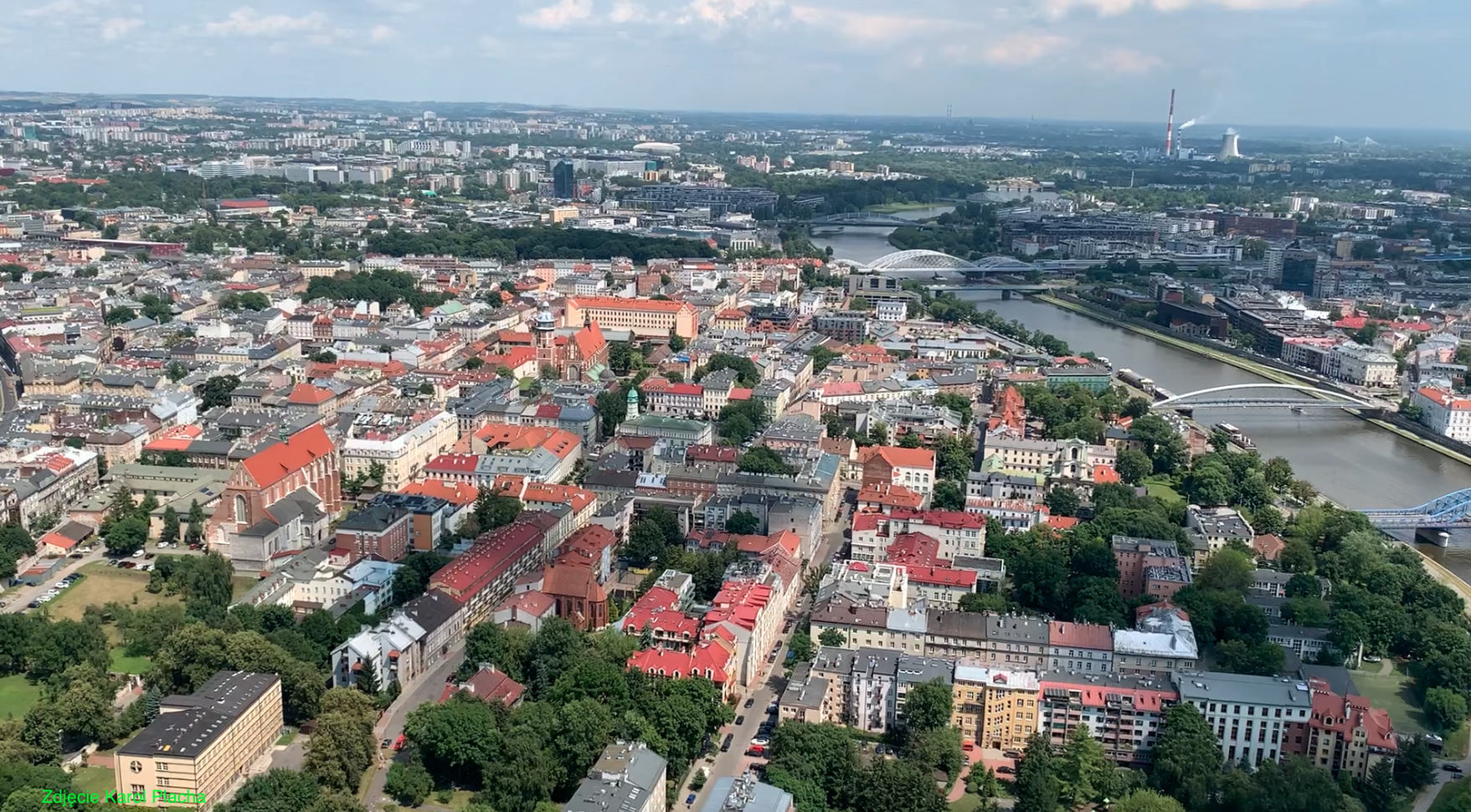Kraków 2023-09-01
Kraków. Sightseeing balloon.
Geographic coordinates: 50.046N 19.935E. Elevation 201 m above sea level. Wołyński Boulevard – next to the Przestrzenie Forum.
For several years in Krakow, on the Vistula boulevards, there has been a viewing balloon available to everyone. The balloon is filled with helium and is a tethered balloon. During the flight, the balloon takes up to 30 people on board, including the pilot. During the flight with passengers, the balloon rises to a standard height of 120 - 150 m from the ground level. The maximum flight altitude is 275 m (gondola level), it is used for scientific research.





The balloon is the only way to see Krakow from a bird's eye view. Sightseeing flights by helicopters and planes are not allowed over Krakow. From the balloon deck you can admire Wawel, Kazimierz, Podgórze, Kościuszko Mound and others.
The balloon is available to everyone; children, people with disabilities and the elderly. The balloon in Krakow is the first installation of this type in Poland and one of the few in the world. A balloon is an aerostat, i.e. an airship lighter than air, floating in the air thanks to the buoyant force, described by the principle of Archimedes. Since the balloon is an aircraft, it is subject to all the provisions of the CAA (Civil Aviation Authority). "Balon Widokowy sp. z o.o.", as a company that performs air operations, holds an AOC air operator certificate issued by the President of the Civil Aviation Authority. The balloon has a registration number. The entire balloon installation system is designed with a large safety margin, the coefficient of which exceeds SF10. The balloon and the landing site infrastructure have all the approvals provided by the European Union for aircraft, including the EASA (European Aviation Safety Agency) approval, which imposes stringent standards on air carriers.
Balloon flights are performed under certain weather conditions. Whether flights are currently operating can be checked on the website or by phone. Flights may also be interrupted without notice due to changes in weather conditions. There is no reservation.
The flight time is 10-15 minutes. The minimum flight time is 10 minutes. Flights can be operated from 09:00 to 20:00, 7 days a week. During holidays, flights can be operated even until 22:00. The number of passengers depends on the strength of the wind, temperature and atmospheric pressure. It is the pilot who, following the changing flight parameters and weather conditions during the previous flight, decides how many passengers he can take on the next flight. Maximum wind force allowing flight: 13 m/s (46.5 km/h), (25 kn).
A normal ticket costs PLN 99. A reduced ticket (children from 4 to 12 years old) costs PLN 65. Children must be accompanied by their parents. A student ticket (up to 26 years of age) and a student ticket (up to 24 years of age) costs PLN 79. 2023 prices. The ticket is valid for 24 months.
The balloon is filled with 6,000 cubic meters of helium. Helium is of high purity 99.995%. Helium is a noble gas, lighter than air, inert and non-flammable. In history, the first balloons and airships were filled with flammable hydrogen, although hydrogen has a higher buoyancy. Hydrogen is also easier and cheaper to produce. Currently, filling gas balloons with hydrogen is prohibited.
One cubic meter of helium can lift a weight of about one kilogram. This means that 6,000 cubic meters provides a lifting capacity that will lift a weight of approximately 6,000 kg. The total weight of the balloon canopy, net and gondola is 2,250 kg. This means that after deducting the dead weight of the balloon, the lifting capacity is approximately 3,750 kg. The balloon, taking a maximum number of 30 passengers on board, still retains 1,200 kg of load capacity, which allows it to counteract gusts of wind. The stronger the wind, the smaller the number of passengers the pilot can take on board to ensure a sufficiently large buoyancy vector.
The highest ceiling for the gondola is 275 m, and then the top of the balloon is at an altitude of 310 m. This is how high research and scientific flights are performed. Diameter of the balloon 22.46 m. Diameter of the gondola 5.8 m. Diameter of the tether steel cable 22 mm. The gondola is ring-shaped. Passengers can move around during the flight.
Written by Karol Placha Hetman
